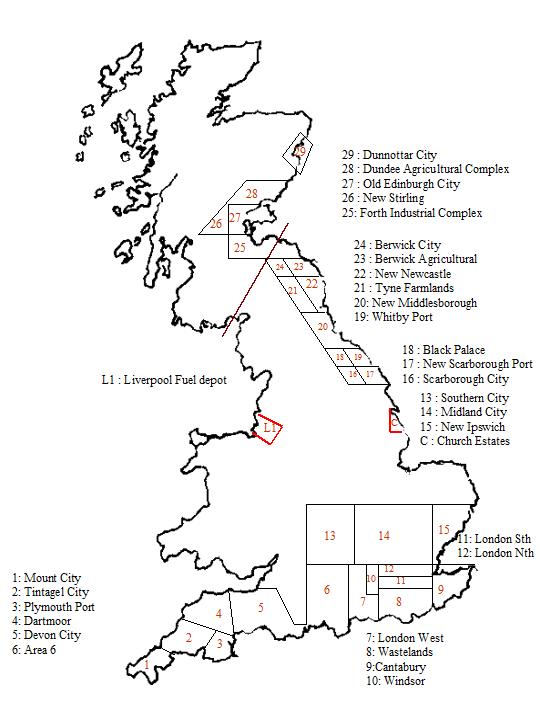Mapping Mason's Realm
A secret look at the map prepared by Mason Knox for his future Empire

When Mason Knox made his plans to rebuild the country, he planned out 29 areas that all had strategic placements to serve his vile purpose.
He made sure that he built in a band, that worked round from his stronghold in Devon and Cornwall, along the south coast, and up the East coast.
Using sea bound industrial and agricultural sectors of the country, gave Mason the chance to seize and use the now disused factories and large areas of farmland.
With the use of strategic ports and harbors, Mason could supply all of his industry in relative safety by ship.
Using coastal areas of land also gave him access to onshore and offshore wind turbines. After the red death there were few who could repair the power stations, but the wind turbines were relatively easy to bring back into use, providing him with the much needed electricity he would require to operate some of the machinery required in his factories. He prioritized the industries he needed to include. metals, cloth, food, and building materials, all of which he saw as the basic ingredients to the creation of a new empire.
Using the remnants of the old industry, it was easy to find those survivors who had once worked the factories, and the offer of jobs and food provided good incentives to get the factories repaired and back in to use as quickly as possible. Scotland was one area where he achieved a great deal of success in a very short space of time.
His plan was quite simple, rebuild the industrial eastlands, and then more west to conquer the rest of the country.
London would be his capital, administered from Windsor, using the River Thames as the highway for a new industrial capital city, taking new goods and materials up the east coast.
Tintagel would remain his seat of power in a relatively changed Cornwall, the only new additions there would be the walls of his new fortress's to house his breeding program of future soldiers of the Empire.
Glastonbury was seen as a sacred place, and a large wall was constructed in a 30 mile circle around it, where it was allowed to return to how it once was, a land of trees and beauty surrounded by marshes and water.
© Robin John Morgan 2010

